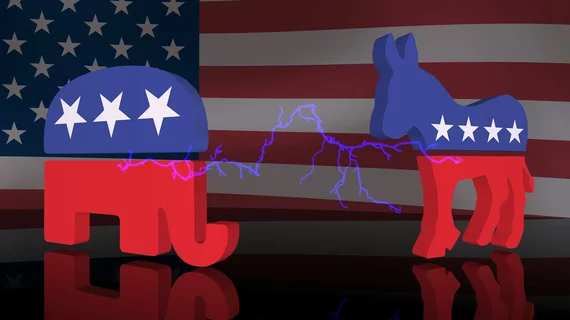Political ideologies have distinct connectivity signatures on MRI, research shows
Can a person’s political affiliation be identified based on imaging of their brain, without their ever saying a word or starting a debate on social media? The answer might surprise many.
According to a study recently published in PNAS Nexus, which examined the functional MRI exams of 174 participants of the Ohio State Wellbeing Project, an individual’s political ideology has a distinct functional connectivity signature on imaging.
“Can we understand political behavior by looking solely at the brain? The answer is a fairly resounding ‘yes,’” said study co-author Skyler Cranmer, the Phillips and Henry Professor of Political Science at The Ohio State University. “The results suggest that the biological and neurological roots of political behavior run much deeper than we previously thought.”
For the research, participants underwent functional MRI brain scans while completing a number of tasks, none of which were designed to prompt a partisan response, and again while simply resting. The imaging was compared to the participants’ self-reported political ideology on a six-point scale ranging from “very liberal” to “very conservative.”
Convolutional neural networks were used to develop predictive models of ideology based on functional connectivity observed on the participants’ fMRI exams. Experts involved in the study noted that each task was indicative of political beliefs, but three tasks in particular had significant links with ideology. Those tasks involved empathy, episodic memory and reward.
Tasks involving empathy were found to be associated with more “moderate” beliefs, while the reward tasks, which involved responding to questions about earning and losing money, were observed to be relative to extremism on both sides of the political spectrum. The functional connectivity patterns observed during the completion of these tasks were found to be just as predictive of political beliefs as the participants’ parental ideology, which has historically been considered the most accurate foretelling of an individual’s liberalism and conservatism.
Activity in the amygdala, inferior frontal gyrus and the hippocampus was found to have the most significant associations with political affiliation, though the causality of this cannot yet be determined, the authors said.
“What we don’t know is whether that brain signature is there because of the ideology that people choose or whether people’s ideology is caused by the signatures we found,” Cranmer said. “It also could be a combination of both, but our study does not have the data to address this question.”
The detailed research can be viewed here.
Related neuroimaging news:
New 7T MRI scanners could increase radiologists' role in treating neurological conditions
Veterans who experience chronic pain and trauma have connectivity abnormalities on brain imaging

